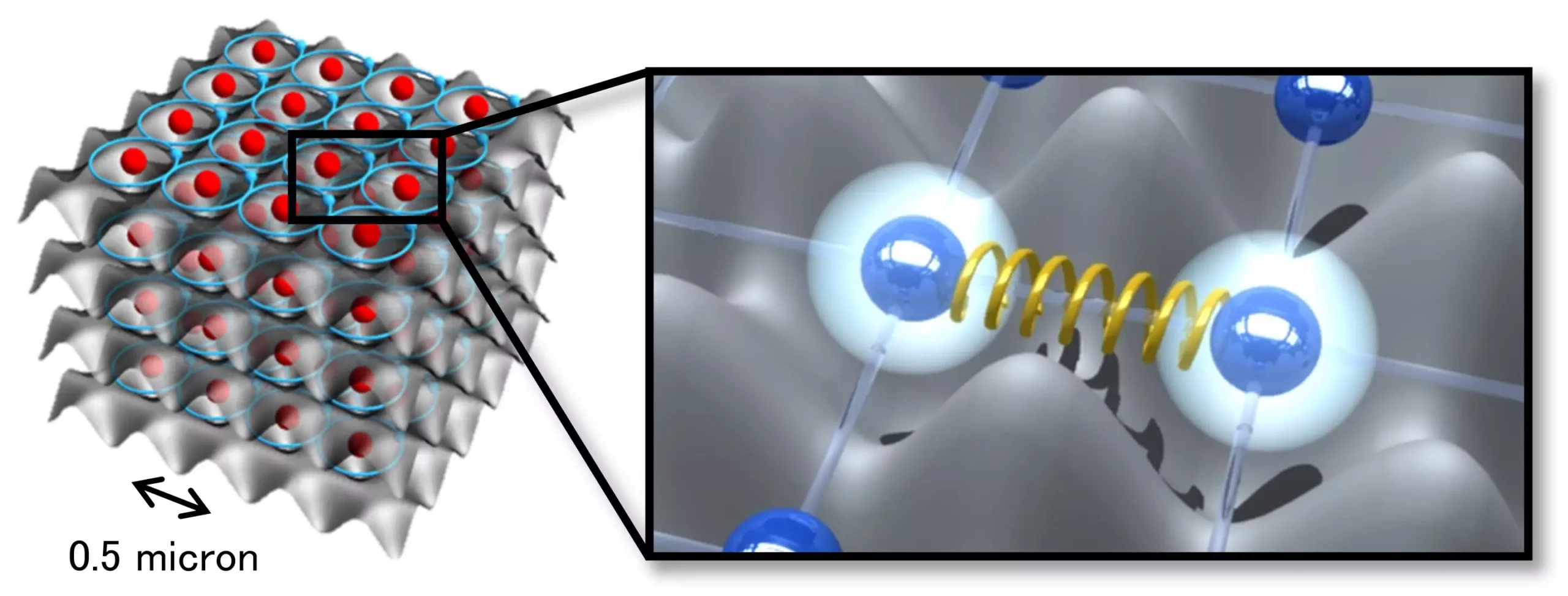In the realm of quantum technology, one concept stands out for its profound implications: quantum entanglement. This phenomenon, where particles become interconnected such that the state of one instantly influences the state of another, is essential for the advancement of quantum computing, simulation, and sensing. Recent developments from researchers at the Institute for Molecular Science have highlighted a new dimension of this phenomenon by exploring the interplay between electronic and motional states through the interaction of Rydberg atoms. This intriguing study not only sheds light on quantum entanglement mechanisms but also proposes novel simulation methods that could redefine the landscape of quantum technology.
Exploring Rydberg Atoms: A Pathway to Quantum Interaction
Rydberg atoms, atoms excited to high energy levels, play a critical role in generating quantum entanglement in cold-atom platforms. By leveraging their giant electronic orbitals, researchers have successfully achieved entanglement between the electronic states of trapped cold atoms. The latest research published in August 2023 in *Physical Review Letters* delves into how these Rydberg atoms can be manipulated to create entanglement not just among electronic states but also between electronic and motional states. This dual entanglement is achieved through a robust repulsive force that arises from the strong interaction between atoms in the Rydberg state.
The study involved the meticulous cooling of approximately 300,000 Rubidium atoms to an astonishing temperature of 100 nanokelvin using laser cooling techniques. This process allowed the atoms to be arranged into an optical lattice, creating a spatial structure with a careful arrangement of 0.5 microns between particles. A remarkable breakthrough was achieved by generating a quantum superposition, combining states from both a ground state and an excited Rydberg state through the application of an ultrafast laser pulse that lasted a mere 10 picoseconds.
Historically, the phenomenon known as Rydberg blockade has limited the distance between excited Rydberg atoms to a range of approximately 5 microns. This blockade occurs because the presence of a Rydberg atom can inhibit the excitation of nearby atoms to the same state. However, by employing ultrafast excitation techniques with laser pulses, the researchers circumvented this limitation and enabled closer proximity of Rydberg atoms. This innovative approach allowed them to observe quantum entanglement between electronic states and motional states quickly—within a few nanoseconds.
The correlation between whether an atom is in the Rydberg state and its movement underscores the significance of this work. Researchers discovered that under the right conditions, this correlation leads to observable entanglement that is distinct and measurable. The specific conditions for observation occurred due to the experimental setup whereby the potential barrier of 0.5 microns facilitated close alignments of Rydberg atoms, thereby overcoming the usual barriers imposed by the wavefunction of the atoms.
The implications of these findings extend far beyond mere observation. The authors propose a groundbreaking quantum simulation method that integrates the repulsive forces between particles, including electrons in varying materials. This new approach facilitates control over particle dynamics on a nanosecond scale, with researchers suggesting that rapid repetition of this technique can fine-tune the interactions within an optical lattice.
The potential applications rooted in this kind of simulation are vast, ranging from new explorations in material science to practical improvements in quantum computing. This research opens up avenues to develop sophisticated quantum simulators that consider both the electronic states and the precise conditions of particle motion, thus enhancing the fidelity of operational methods.
Enhancing Cold-Atom Quantum Computers
The push towards developing ultrafast cold-atom quantum computers, which leverage Rydberg states to expedite two-qubit gate operations, is a focal point of this research. Past limitations in fidelity during gate operations, often influenced by the motion of atoms, have now been addressed through the experimental observations made in this study. By clarifying the processes that lead to entanglement between electronic and motional states, this work serves as a critical stepping stone towards realizing highly efficient and reliable quantum computers.
The study conducted by the researchers at the Institute for Molecular Science not only lays the groundwork for enhanced understanding of quantum entanglement but also introduces a transformative simulation method that could prove invaluable for future quantum technologies. With ongoing advancements in quantum computing on the horizon, the implications of their work promise to pave the way for significant technological progress.


Leave a Reply